DISCREET MONICA: MISS RIGHT BLOODY FANTASTIC
by Graham and Denise Woods
[Graham and Denise, very graciously, offers to write a review comparing the various iterations of Monica all the way from Monica2 to Discreet Monica. Thanks a lot for taking the trouble, mate!]
Way back in 2007 I wrote a review of ‘Monica 2’: an NOS DAC designed and built by Yeo, one of the treasures of the DIYer’s universe. Monica 2 is substantially similar to the original Monica (I’ll call her ‘Monica 1’), so my review could fairly apply to both.
I won’t repeat the detail of that review (originally posted on Yeo’s web site: www.diyparadise.com); however I do want to record that Monica 2 blew me and my wife Denise away, and convinced us that non-oversampling DACs have the potential to outperform any competition based on alternative circuits.
Those in the know will know that Monica 2 was followed by Monica 3, which reportedly offered substantial sonic improvements – and even more improvements if you took advantage of some mods and add-ons, most of which are still available (check Yeo’s web site for details).
Enter Discreet Monica: the latest DAC to be created by Yeo and still so recent (in early June 2012) that she’s scarcely half-way toward her first birthday.
Although she is an NOS DAC, in terms of circuit design the new lady is significantly different from previous Monicas. Just HOW she differs is something you can discover by visiting Yeo’s web site; in this review I’ll focus on how she sounds. I will mention her weight, since when I last checked that wasn’t mentioned on Yeo’s site. She weighs a little over 3 kilos: considerably more than all her sisters combined.
HOW GOOD IS DISCREET MONICA?’ THE JOURNEY OF DISCOVERY
For me the most helpful component reviews are those that include comparisons. Comparisons help me to measure the new component against components I’ve heard or at least against components that have been compared with OTHER components, and gradually I build a comprehensive ‘comparison matrix’.
My review of Monica 2 compared her with other highly regarded DACs or CD players that Denise and I had actually heard, all of which she eclipsed (among these were the Rega Planet 2000 and the Rega Jupiter players, two Naim players, almost all the Musical Fidelity DACs, the then latest Cyrus DAC, the Chord DAC 64, and the stratospherically priced dCS Purcell-Delius combination). To Denise and me the appropriate measure of comparison for Discreet Monica seemed obvious. It was the performance of Monica 3, the most evolved Monica until the birth of Discreet Monica and (in 2012) still available for purchase. Even more enlightening, we thought, certainly for us, but also for any potential buyer, would be a comparison among Monica 2, Monica 3 and Discreet Monica.
By good fortune I was able to borrow a Monica 3: well run in, and with no modifications. As a first step then, Denise and I compared Monica 3 with our own Monica 2: also unmodified, and still the DAC we use in our principal audio system.
MONICA 3 VERSUS MONICA 2
Because Monica 3 needs at least 15 DC volts we couldn’t use our regular 12 volt battery supply; yet we wanted to compare these two DACs on a level playing field. The solution was to use as our power source a laboratory-standard switch-mode variable power supply (available from Jaycar in Melbourne Australia), which would take its 240 volts AC from a sine-wave inverter (see below).
For Monica 3 we used 18 volts: i.e. a tad more than the 17.8 usually fed to her from her own wall-wart supply.
For Monica 2 we set the voltage to 12.5: i.e. approximately the voltage that would have been fed to her from her dedicated Trojan battery had we used it.
We used our customary system for the audition: a Rega Planet 2000 as the transport; VTL Super Deluxe preamplifier (actually a PR 1: an upgraded, completely dual-mono version of the Super Deluxe); VTL 90/90 semi-dual-mono power amp (KT 88 output valves; push-pull); tri-wired Whatmough 502i speakers; and a variety of interconnect cables and power cords, all of high quality. 240 volts AC was supplied by a sine-wave inverter fed from a large 12 volt battery bank (this battery supply is separate from Monica 2’s). The digital interconnects for the two DACs were identical except for a small difference in length and in termination (our Monica 2’s interconnects are hard-wired); analogue interconnects were of different makes but are sonically very similar.
Analogue sources didn’t feature explicitly in our comparisons of the three Monicas; however Denise and I play LPs as often as we play CDs, and our analogue front-end is the implicit benchmark for all our digital source components. It comprises a Michell Gyro SE turntable with isolated DC motor, a Michell TecnoArm (Cardas rewired; custom modified) and an Amber (read ‘Grado’) Europa cartridge.
For those who might be interested: our listening room is approximately 5.4 metres long and 4.2 metres wide at the listening position tapering to 3.7 metres wide at the speaker end (i.e. the side walls are symmetrical but not parallel), with a ceiling height that rises from approximately 2.4 metres at the speaker end to 2.7 metres just forward of the listening position and then falls again. Side walls and ceiling are plaster board; the timber floor is carpeted. The speaker-end wall is heavily draped; the listening-end wall is not uniformly parallel to the speaker-end wall but the section that is parallel is also heavily draped.
Before we began our audition we warmed the entire system at idle – minus either DAC – for an hour and a half, to rule out subsequent changes in performance based on factors other than the DACs themselves. Thereafter we connected the DAC that was to be auditioned and warmed it for twenty minutes, while we played an LP to keep the system ticking over.
As our source for the comparison we used what has become our standard test CD: Simon and Garfunkel’s ‘Old Friends: Live on Stage’. These days this disc gives us even more valuable information, since we own the equivalent DVD and have attended a concert in a similar-size venue in which Simon and Garfunkel presented very nearly the same material. In line with our usual practice, Denise and I took separate notes and didn’t swap impressions until the audition was over.
THE RESULTS
Despite our different preferences, Denise and I agreed on Monica 3’s areas of dominance.
The main areas of improvement over Monica 2 were:
a more spacious soundstage: wider and with more ‘air’.
greater detail: instrumental lines and lyrics were more precisely rendered.
tighter, more disciplined transients, right across the frequency range.
more extended treble AND bass, but especially the treble.
a more neutral presentation: in comparison Monica 2 sounded slightly veiled, slightly congested and slightly ‘plummy’: more like a warm but slightly compressed production on a much-played LP.
Monica 3’s treble was delivered with most, but not all, of that delightfully non-fatiguing ‘analogue’ quality that we fell in love with when we first heard our Monica 2. It was difficult to decide whether this difference should be scored in Monica 3’s favour or against it, because now we had to decide whether Monica 2’s ‘analogue’ sound was the result of the absence of digital artefacts or the result of her more veiled and plummy presentation. In the end we couldn’t make up our minds on that; regardless, I preferred Monica 3’s treble to Monica 2’s, whereas for Denise it was line-ball.
A definite negative of Monica 3, in our opinion, was a slight additional hardness in the presentation of this particular CD, especially at high volume: to be fair, a volume level that we would rarely dial up for constant listening. It needs to be said that this disc IS slightly hard intrinsically – as can be verified by listening to the equivalent DVD – so one could argue that all Monica 3 was doing was presenting it as it is. Even if Monica 3 was herself a contributor, for me her virtues outweighed that shortcoming and put her comfortably ahead of her older sister. For Denise, however, the contest was still too close to call.
Subsequent comparisons between the two sisters, playing thoroughly familiar discs featuring jazz, rock, folk, classical, male and female vocalists both solo and massed, confirmed the more ‘analytical’ conclusions that Denise and I had reached during our primary audition – and also confirmed that the slight hardness I reported on earlier IS, indeed, intrinsic to the CD itself. However those comparisons also sharpened our awareness of both the merits and DEmerits of each DAC.
Monica 2’s shortcomings remained the same, and I’ve alluded to them already. Monica 3’s flaws were more difficult to put into words; yet they were there: best summarised as a sonic irritation that on some CDs was so subtle as to be not worth mentioning but, on others, so evident that we were tempted to turn down the volume and/or cut the treble (via a custom-built tone control: usually switched out of the signal path). On balance, I still preferred Monica 3, despite her shortcomings, but Denise found herself leaning toward Monica 2, even though she fully acknowledged her shortcomings too. Ideally, Denise would have used Monica 2 for some CDs and Monica 3 for others; I would have gone with Monica 3 for all of them. However, we shared an unavoidable conclusion: neither of these DACs is ‘as good as it can get’.
It deserves to be reported that, powered directly by her own battery, Monica 2’s presentation became cleaner and less plummy. Even so, I still preferred Monica 3, and Denise was still undecided. How Monica 3 herself would sound on a battery supply is, of course, a question I can’t answer, but other users have reported on this, with some preferring battery and some a mains-derived power supply.
MONICA 3 VERSUS DISCREET MONICA
It was now time to compare Monica 3 with the new lady on the block.
As before, all preparation procedures and all system components that could be kept the same were, indeed, the same. The exceptions were the DACs themselves and their respective power supplies. For Monica 3 we used the variable power supply that we’d used in her comparison with Monica 2; Discreet Monica was powered by her own integrated mains-derived power supply, fed to her via a bog-standard kettle cord similar in quality and power rating to the kettle cord that is sold with Monica 3’s power supply. By now we’d discovered that, in our system, Monica 3 sounds at her best on 17.5 volts, rather than, say, 17 or 18, so we used this for the shoot-out between her and her new sister. We set Discreet Monica’s variable output pot to 9: one notch below maximum.
Again our CD for the audition was Simon and Garfunkel’s ‘Old Friends: Live on Stage’; and again Denise and I took separate notes and didn’t swap impressions until the audition was over.
Keep in mind that, at the time of our inaugural audition, Discreet Monica had had only ten hours of running-in (via a spare CD player into a headphone amp). This is important because, as with Monica 3 and Monica 2 before her, some of her capacitors are Black Gate n series, which reputedly take at least 150 hours to burn in properly. She also uses quite a lot of Rubicon ZLs, also slow to burn in.
THE RESULTS
It was inevitable that two listeners would have at least slightly different perceptions and would also use different language to express them. Even so, the similarity of our conclusions is remarkable. In what follows I’ve done my best to capture our combined, overall impressions.
I’ll deal with the more analytical, cerebral, aspects first.
Compared with Monica 3, Discreet Monica delivered perhaps a slightly more extended bass; but more compelling was the quality of that bass: tight, utterly rock-solid, with Discreet Monica in total control. Monica 3 is no slouch in this department but Discreet Monica did it better.
Discreet Monica’s treble was at least as extended as Monica 3’s but, again, it was the quality of her treble that set her apart. It was noticeably sweeter and somehow ‘richer’, as though it contained more information in this register.
Discreet Monica’s clarity, air and detail were at least the equal of Monica 3’s; but, here too, there was a difference in quality: more texture, body, the qualities that we’re used to with our best LPs.
Discreet Monica’s staging surpassed that of Monica 3. Basic parameters such as width, depth and height were much the same, but the identity and location of musical elements, including the subtle cues to the position of singers and band members and the crowd, were decidedly more discernible.
Discreet Monica’s timing was breathtaking, significantly superior to Monica 3’s, and puts her at the very top of the column among the DACs and CD players we’ve heard: including the Naim players. Allied to this: vocal and instrumental notes were presented with virtually no extraneous smearing or overhang. As you’d expect, this was particularly noticeable with percussion and with vocal sibilants.
That’s the head stuff. What about the heart and soul?
Within seconds of hearing the new lady sing, Denise and I were captivated by a rich, multilayered, fulsomely textured and utterly riveting presentation that was at least the equal of the best LPs in our collection. The sense of ‘being there’ was better delivered than on any other system and by any other digital medium we’ve heard so far. Further listening didn’t make us blasé: on the contrary, we had the feeling that we were becoming addicted (we discovered that we’d both had these responses when we discussed our impressions after the audition).
Back to the head now: how much better than Monica 3 did we think Discreet Monica was? (This intuitive global rating is one we try to apply to any piece of equipment we’ve short-listed for purchase.) Denise judged at least 40%; my note reads ‘at least 35% and as high as 45%’. So let’s settle on 40%.
AN UNEXPECTED COMPLICATION
In the normal course of events Denise and I would have taken our totally focussed critical listening no further. Certainly we expected Discreet Monica to improve as she notched up more hours, but we expected the improvement to be gradual and modest. After all, we’d heard no dramatic change in our Monica 2 during her first 150 hours.
What we would have done, however, is listen more casually to Discreet Monica playing a variety of familiar CDs, to refine, confirm, or possibly revise our primary impressions. We were preparing to do just that when word came through from Yeo that there might be a quantum leap in Discreet Monica’s performance after about fifty hours. This possibility was something we couldn’t ignore.
So it was back to the bench for the new lady: to be hooked up to a spare CD player and on to a headphone amp (and then a pair of headphones, so that I could check the sonic chain occasionally), with the CD player set to ‘repeat’. We left her like that until she’d clocked at least 150 hours. We were ready to audition her again.
MONICA 3 VERSUS DISCREET MONICA: ROUND 2
Rather than relying exclusively on aural memory, Denise and I put our first impressions on the back burner, and once more put Discreet Monica head-to-head against Monica 3. Again we took separate notes, and as usual we waited until after the audition to discuss them.
SECOND ROUND RESULTS
My impressions and Denise’s were startlingly similar: even down to some of the language we used. As we compared our respective notes – for this audition AND for the inaugural one – the fundamental qualities of this new DAC were easy to agree on, and it was evident that the extra hours of run-in had consolidated them.
The first thing I want to mention is that the nature of the first-audition differences between Monica 3 and Discreet Monica had persisted.
Second: the ‘quantum’ of difference had increased – but not by a huge amount. In other words, there had been no ‘quantum leap’ of the kind that Yeo’s email had prepared us for. (For the record: this time Denise judged Discreet Monica to be ‘at least 40% better than Monica 3’; I wrote ‘at least 40% and possibly 45%’. In referring to Discreet Monica’s first and second performances both Denise and I had used exactly the same words: ‘difference not night-and-day’.)
Third: all Discreet Monica’s qualities as we’d heard them during the first audition were present in the second, but the extra hours of run-in had lifted nearly all of them from ‘sensational’ to ‘sublime’.
One quality that had not changed was Discreet Monica’s timing: it was still so good that it’s difficult to imagine how it could be bettered.
The ‘analogue’ richness and detail (a result of the retrieval of more information), the purity and treble sweetness were still there, but now with more finesse; an analogy is a polished table that has been FRENCH-polished to a piano finish by a master craftsman.
The most striking improvement was in a quality that we’d both registered during the first audition but almost subliminally. Now it was so palpable that it was easy to describe. That quality is ‘effortlessness’. Everything she does Discreet Monica does effortlessly. One has a sense of a calligrapher’s brush allied with the horsepower and speed of an Aston Martin and the focus and precision of a Swiss watch maker. The result is NOT a constantly ‘dramatic’ – i.e. ‘ballsy’ – presentation: rather it’s an overwhelmingly convincing sense of ‘being there’, listening to real music, in a real venue, with all of the nuances, the peaks and troughs, the delicacy, the slam, or whatever qualities the actual performance had at the time it was recorded.
THE MONICA FAMILY: FROM COMPROMISE TO EMANCIPATION
With the second audition behind us Denise and I did what we’d always planned to do: we listened through Discreet Monica to a variety of familiar CDs featuring jazz, rock, folk, male and female vocalists and classical music. With one exception – which I’ll discuss shortly – nothing we heard led us to change our minds about this new DAC, but it did help us to understand what it is about Monica 3 that makes her ascendancy over Monica 2 less clear-cut than we might have expected.
Discreet Monica, in our opinion, does everything better than either of her two sisters does it. She manages this feat, I believe, because she never has to push herself beyond her quite extraordinary capabilities.
In contrast, while Monica 3 gives the listener more than Monica 2, it comes at a cost. Compared with either of her sisters she sounds brash, too much ‘in your face’, slightly unrefined. I have the sense that she’s trying too hard, pushing herself beyond her comfort zone.
Monica 2 avoids these shortcomings, but that comes at a cost too. Monica 2’s solution is to veil the music slightly and to compress it: especially at the treble end. So she sounds ‘sweeter’ than Monica 3, more ‘polite’, even slightly more ‘analogue’, but also less detailed and less dramatic.
With Discreet Monica you really can have your cake and eat it too: she combines the virtues of her two older sisters and then takes off into a realm of her own.
I want to record one more feature of this most recent addition to the Monica family: one that demanded a correction to an inadequately considered assumption Denise and I had made before we extended our CD sampling. Discreet Monica, unlike Monica 2, does not cover up the worst excesses of CDs. An atrociously recorded CD – the sort that cuts you in half and has you wondering about the hearing of the artist or the sound engineers – still sounds pretty horrible: Discreet Monica will not paper it over. As far as I’m concerned that’s the way it has to be. If you want a component that puts the fewest imaginable obstacles between the listener and the moment of recording, and IF the moment of recording was crap, you should expect to hear crap.
DISCREET MONICA IN PERSPECTIVE
I want any prospective owner of a Discreet Monica to keep this in mind: she dominates a proud lineage whose foundation member still outperforms all the ‘non-Monica’ competition Denise and I have heard so far. That competition includes the Chord DAC 64 and others (see above), and, more recently, the best CD players available from Creek and Cambridge Audio, the Sony SCD-XB790 SACD player (playing CDs of course), and the built-like-a-battleship Pioneer PD-S707, which was considered good enough to be a platform for CD audio at the 2004 Milan Hi-End Audio Fair. All the Monica family members are regal performers; Discreet Monica, in our opinion, is the unchallenged Queen.
HOW DO YOU PUT A PRICE ON DISCREET MONICA?
If you’ve read this far you’ll know that discreet Monica is the best DAC (and in fact she’s the best digital source of any kind) that Denise and I have heard; but does she offer good value for money?
The value-for-money question is usually a vexed one. The answer will depend partly on what you’re used to spending on your HiFi gear, partly on the price of the competing components (is it, say, $100 versus $300, or $5000 versus $8000?), and partly on what increment of improvement you demand for each increment in price – and all these factors interact. Whatever your calculus, it’s harder to apply it if you can’t be sure of the improvement you’re going to get – which is often the case if you’re buying a component on-line and you don’t have a friend or relative who can let you listen to the one they bought. Another complication is that it’s almost impossible to personally audition every competitor, either because of time pressure or because some contenders are inaccessible except if you buy them but too expensive to justify your buying them before you audition them.
And that brings me back to the vexed question – except that for me, in this instance, it isn’t vexed at all.
At a starting price of 2000 Singapore dollars Discreet Monica is quite a lot more expensive than Monica 3. However she’s not only in a different league: she’s in a different arena. She’s a radical departure from her older sisters in design and architecture and more expensively dressed, and I believe a prospective buyer should be comparing her with the most exalted competitors currently available, such as CH Precision’s C1, Light Harmonic’s DaVinci and Vincent Brient’s TotalDac D1 Reference. Of these, the TotalDac D1 Reference is the cheapest; including freight charges, import duty and taxes, the most basic version of this French DAC would cost me 8000 Euros. Alongside her legitimate competitors Discreet Monica, in my opinion, is an incomparable bargain.
There are some people, in any case, who will say you can’t put a price on the voice of an angel. For me Discreet Monica connects Earth with Heaven: what price should I put on that?
Graham Woods
[Graham Woods is a Melbourne (Australia) clinical psychologist and professional writer. Denise Oh is a business systems and knowledge management consultant, as well as a classically trained musician. Both are audiophiles and occasional DIYers.]

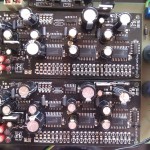

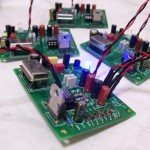

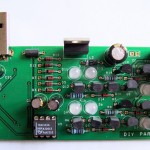
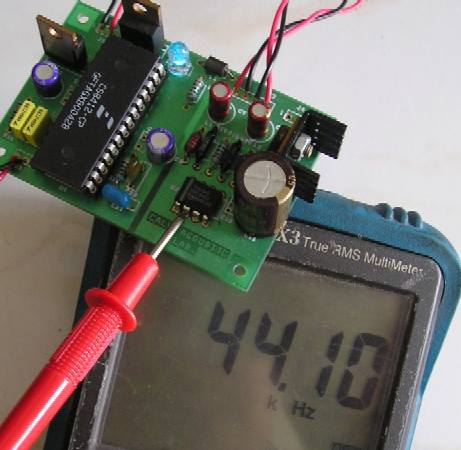
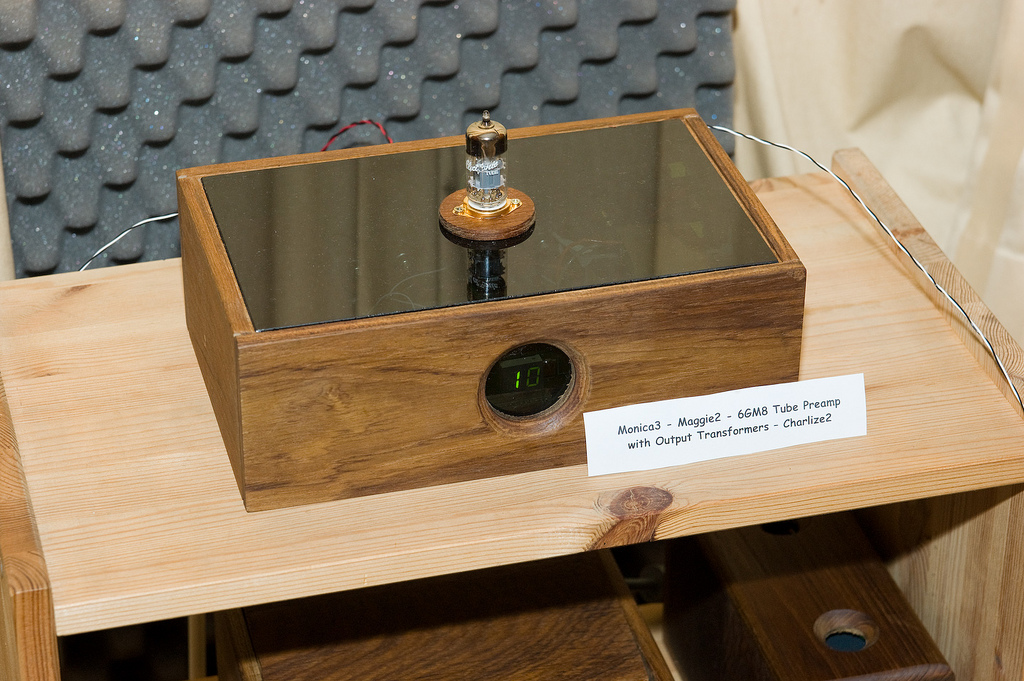
A very easy and cheap way to “burn-in” electronic audio equipment is to feed the equipment with the coaxial (spdif) digital audio output of a satellite receiver tuned to to the 24 hour radio channel.
In Malaysia and other countries with Astro service, tune into Astro channel 851. New decoder like the PVR has digital audio output.
Thats how I “burn-in” my Monica 3. I continue to listen to Astro radio broadcasts, of course through Monica 3!
Surprisingly, Astro radio broadcasts high quality audio.
Thanks to Denise and Graham for their sharing. Good effort.
Happy DIY
Richard Chu
My discrete Monica wins my heavily modified Monica 3 significantly. The price of a discrete Monica is cheap considering its good sound.
hi ck
glad you like her! thx!
yeo
How can I get the Monica DAC? How much? Is the version 3 the best?
hi faj
problem is… i’m not selling any discreet monica at the moment.
she’s too difficult to build.
i’m working on a totally different version, but a lot easier to build, even for the clumsy diyer.
yeo